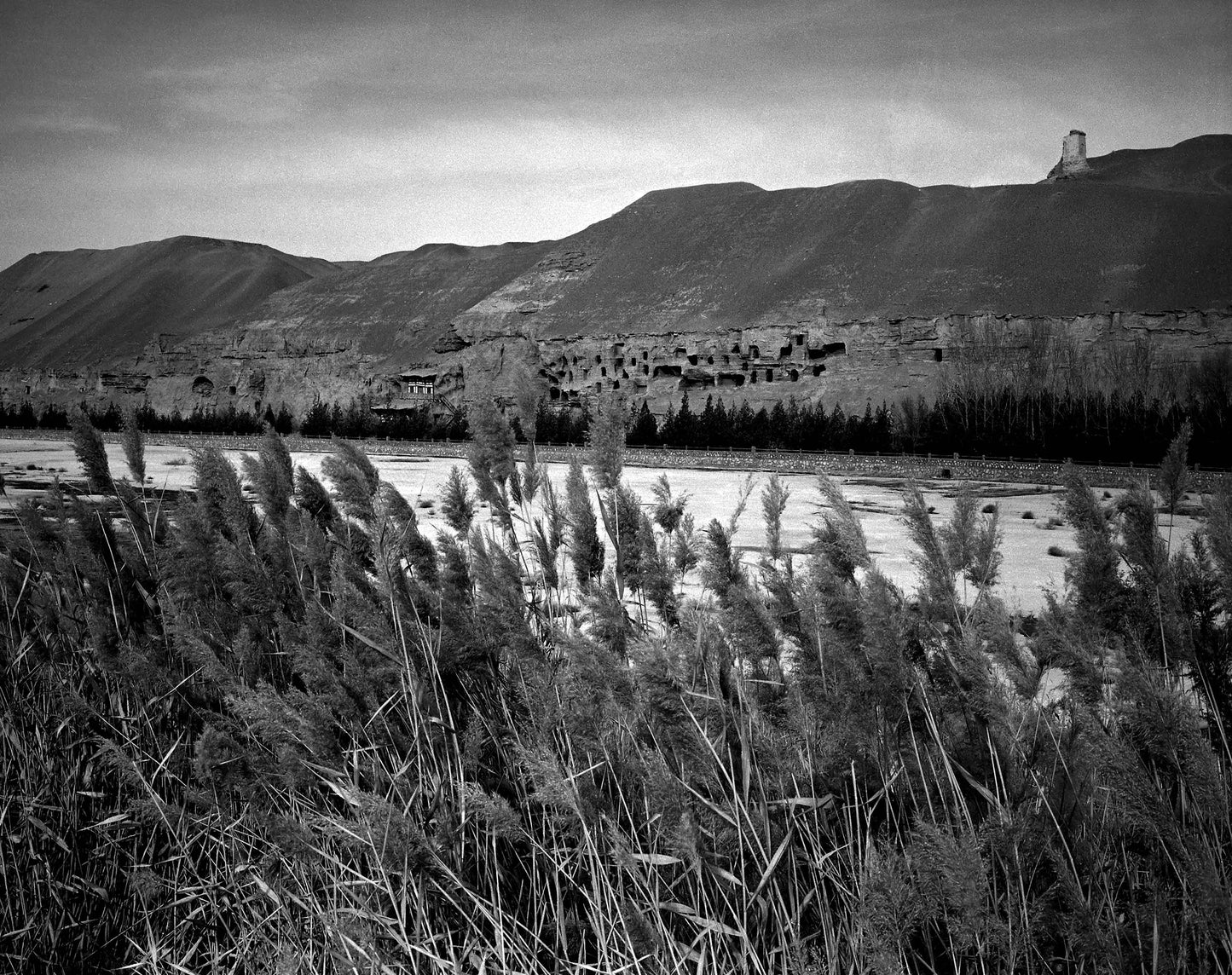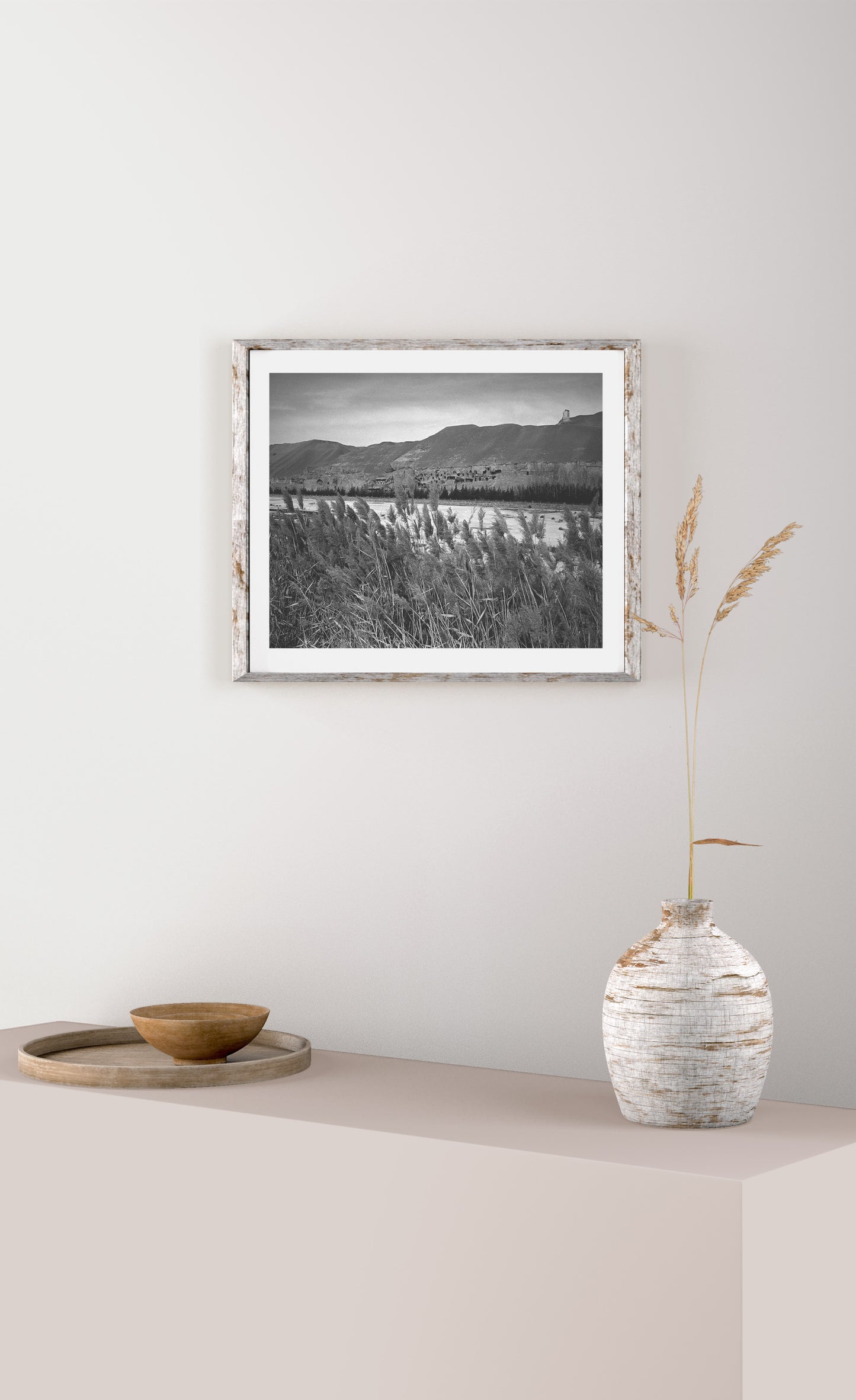Whispers of a Thousand Years – Dunhuang, China
Whispers of a Thousand Years – Dunhuang, China
Title of the Artwork: Whispers of a Thousand Years – Dunhuang, China
Year of Photography: 2000
Printing Process: ILFORD MULTIGRADE IV RC photo paper, hand-printed using silver halide process
Artwork Dimensions: Height 12 in, Width 9.5 in (the artwork is in perfect condition)
Artist’s Reflection
This black-and-white photograph, taken in 2000, captures the historical aura of the Mogao Caves in Dunhuang. In the foreground, reeds sway gently by the banks of the Yellow River, while cave temples are carved into the loess cliffs, forming a silent scroll of Silk Road memory.
In the autumn of 2000, I stood by the river, using monochrome film to document this land where desolation and history converge. I aimed to capture the weight of time, sedimented in silence. As a beacon of cultural legacy, the Mogao Caves have witnessed a millennium of civilizational change—standing still, waiting for the world to pause and listen to their stories.
Background Story
The Mogao Caves, located in Dunhuang in northwestern China, were first constructed in the 4th century. They served as a crucial outpost along the ancient Silk Road, bearing witness to the fusion of Eastern and Western cultures. In the 5th century, merchants from Central Asia brought Buddhism to Dunhuang, sparking the creation of elaborate murals and sculptures that turned the caves into a spiritual and artistic crossroads.
The murals of Dunhuang blend Buddhist narratives with artistic traditions from both East and West, vividly reflecting the prosperity of the Silk Road.
Among the vast and barren Gobi landscape, legends of the monk Xuanzang still linger. It is said that the young pilgrim once paused here, mesmerized by the paintings and statues, contemplating the wisdom of Buddhism. Even now, when the desert wind stirs, it is as if the echo of his footsteps can still be heard.
Today, the Mogao Caves remain in quiet vigil, bearing the weight of timeless faith and culture along the ancient Silk Road.
Share








